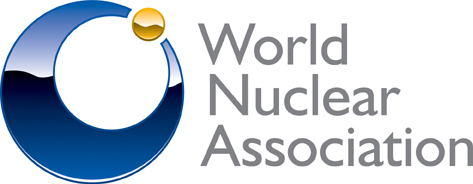I recently blogged about calls for standardization for nuclear reactor design presented at the 41st Annual Symposium of World Nuclear Association’s in London in mid-September. This particular presentation was focused on big reactors like the ones currently in use.
Vanessa Jakovich, who chairs the World Nuclear Association's Licensing and Permitting Task Force also discussed standardization at the Symposium. She pointed out that the current variety of regulations and laws in different countries made standardization and cooperation difficult.
After talking about big reactors, she said that the push for small modular reactors (SMRs) would definitely benefit from standardization which will be easier because they are just being developed and the existing laws and regulation should be modified anyway. She talked about different ways in which SMRs are different from current power reactors.
Their small size means that they can provide more flexibility with respect to expansion of capacity. They will be cheaper which will make financing easier to obtain. They also produce less nuclear waste from spent fuel which will make them more attractive. On the other hand, questions have been raised about whether or not the cost of constructing and operating several SMRs will be any cheaper than construction and operating one big reactor.
They will be manufactured in factories which will allow for standardization of components and better quality control. However, one problem with prefabrication is the fact that if there is a flaw in the design, every reactor from that particular batch will share the flaw. There will also be a separation between the manufacturers and operators.
Many SMR designs have passive safety systems that allow the plant to shut itself down in an emergency where all power to the plant is shut off. This will it easier to operate such nuclear power reactors. On the other hand, the passive safety systems better work exactly as planned or there could be problems.
SMRs are small enough to consider putting underground. That would reduce seismic risk and the risk of releasing nuclear materials into the environment. There will also be a reduced demand for cooling water.
The SMRs will be small enough to move from their operational site to a special facility for decommissioning. This will be more efficient than the current practice of decommissing every reactor on site. On the other hand, this will require the transportation of the reactor to the decommissioning site with attendant risks of accidents or theft.
On the one hand, SMRs are new and unproven. On the other hand, because they are smaller and made in factories, they can be more easily modified during manufacturing than is currently the case for onsite conventional reactors.
If new international standards could be drafted for SMRs, then they could be easily manufactured in one country and transported to another country for installation and use.
One possible impediment to the widespread use of SMRs concerns the International Atomic Energy Agency's Convention on Nuclear Safety. Article 9 demands that the operators take primary responsibility for the reactor. However, due to the fact that the reactor will have be built offsite at a factory, the operators will have less oversight in construction than they currently do for conventional reactors. Article 18 says that reactors must be operated according to well established and well tested procedures. Because the SMRs are so new, the existing recognized procedures may not be appropriate for their operation.
There will definitely have to be major changes to licensing and regulation of nuclear power plants in order for SMRs to widely accepted and adopted.
